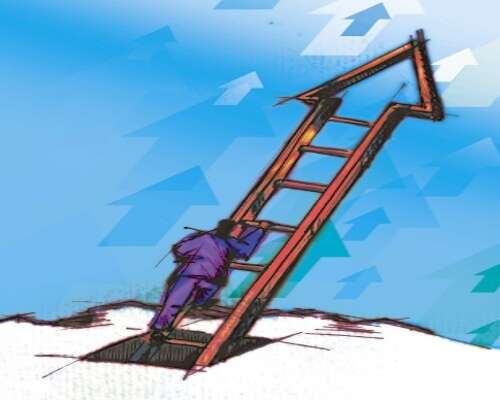
Today banks are keen in identifying new business niches and more customised services to handle the stiff market competitions. On the other hand inflation is continuing to haunt the policy makers.
In this scenario, RBI is expected to continue putting pressures on banks to increase the interest rates further in the coming year, with the monetary policy review in the end of January 2011.The lending rates has already shown signs of gradual firming up as a response to the regulatory measures put forward by RBI in the second quarter review during the early days of November 2010.
Although the year 2010 started with a good and smooth outflow in the loan segment, the monetary reviews of RBI has mandated certain regulations, both directly and indirectly to control the flow of liquidity in the system. In this fiscal, the policy rates have been raised six times so far. The Repo Rate has seen an increase by 125 basis points while Cash Reserve Ratio (CRR) a 100 basis point’s hike till now. To tame the rising prices in the housing sector, the risk weight for residential housing loans of Rs.75 lakh and above has been increased to 125% and LTV celing to 80% with immediate effect. The only exception is for borrowers looking for loans below Rs.20L. They will need to pay only 10% as down payment as opposed to others who need to shell out 20%.
The year 2010 thus visualized turmoil in the interest rate scenario of the country. The major impacts of this year are the rising interest rates in both deposit and lending and the disappearing teaser loans in the home loan segment, especially in the final quarter. For instance, State Bank of India has raised deposit rates by 50 to 150 basis points. SBI will be reviewing its base rate and special home loan scheme where it charges a fixed rate of 8% in the first year and 9% in the second and third year.
RBI has also increased the provisioning norms for teaser home loans which will last till the borrower moves back to the regular interest rates when the teaser period ends.
Banks increase deposit rates to attract more depositors. At the same time, as banks have lesser funds left with them and are paying higher interest to RBI (with the increased repo rate), they also increase the lending rates. RBI has instructed the banks that a higher lending rate should automatically ignite the cost of deposits. But so far, the increase in the benchmark rates has not fully reflected to the deposit rates.
In the loan segment, HDFC, ICICI and SBI have increased their home loan rates by 1%. SBI is continuing with its special home loan scheme with increased interest rates linked to the base rate and so is the case with HDFC.
In the current financial year, however, there has been a significant pick up in credit flow to industry loans and personal loans. As education loans and personal loans are highly need based loans, the demand for them seems to have unaffected, in the changing market conditions. When rates are on the higher trend, some banks offer special discounts and festive offers to pull the market. Education loan is the most rapidly growing segment of retail lending, which grew at 31% this year, while home loans and personal loans are showing only 4-5% growth. Increase in rates appears to be a certainty and it is the extent of the hike that banks have to decide on.
With the hiking rates, your dream cars will become more expensive this year. Car loan lenders have jacked up interest rates on loans between 75 to 100 basis points, and even car manufacturers are planning to increase prices due to the heavy input costs.
On the home loan front, existing customers need to watch out for tweaks in their interest rates. While the base rate system might benefit the new loan applicant it may not be so for existing customers. Discuss with your bank about passing the benefits of the base rate system to you as well. RBI has been stressing on this as well.
The concept of cross selling is giving added benefit now, especially to personal loan and education loan customers as for banks cross selling enhances the customer’s loyalty and ensures further business prospective to the bank. The central government’s decision to not charge interest rates for education loans on families whose income is less than 4.5 lakhs per annum is also a boon. This will come into force soon.
The Credit rating agency of India Ltd (CRISIL) expects a sharper hike in deposit rates and a healthy pick up in credit demand in the coming financial year. The credit growth this year seems to be higher than the growth witnessed in the corresponding period of the previous year. But for the banking industry, it is lower than the expectations as they targeted an overall credit growth of 20 per cent in FY-2011.
As real estate prices are rising as well as the interest rates, home buyers seem to have got themselves into a postponing attitude. This is indicated by a decline in home loan growth with various lenders. But still, the loans have far outpaced deposits in terms of growth. While loans have increased 11% this year, deposits grew at only a 8%.
With most banks increasing lending rates, the borrower needs to gear up to rework the monthly budget as they will have to fork out more every month. A shift from one bank to another is not an option as all banks are following the trend.